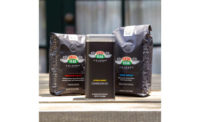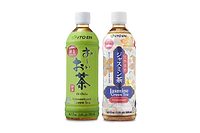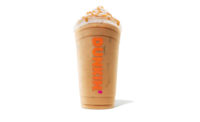2019 State of the Beverage Industry: RTD coffee, cold-brew sub-segment drives category
Ground, single-cup experience flat growth

The daily “cup of Joe” recently has taken on a new meaning as consumers now are trending toward crafted and tasteful, yet highly caffeinated forms of coffee. Ready-to-drink (RTD) coffees, including cold-brew varieties, seem to be appealing to consumers who wish to stay energized in their day-to-day lives.
According to Chicago-based Information Resources Inc. (IRI), refrigerated RTD coffee increased 26.4 percent for the 52 weeks ending May 19 in total U.S. multi-outlets. This growth was led by Stok with an increase of 69 percent and Starbucks RTD with an increase of 40.5 percent, during that same time-frame, according to IRI data.
“After years of weak performance, ready-to-drink coffee has caught fire in the U.S.,” noted Gary Hemphill, managing director of research at New York-based Beverage Marketing Corporation (BMC), in Beverage Industry's September 2018 issue.
The extensive growth of RTD coffee can be attributed to several factors, experts note. For example, the shift away from carbonated soft drinks partially has boosted the performance of the coffee sub-category, said Chicago-based Euromonitor International’s Senior Beverage Analyst Matthew Barry in Beverage Industry’s September 2018 issue. “The decline of carbonated soft drinks and other high-sugar products has created a real opportunity for emergent soft drink categories,” he explained. “RTD coffee has done a good job in moving into some of these occasions. What’s interesting about that is that many of these occasions were previously not times when people were drinking coffee. The growth of RTD represents an absolute gain for the category in a way that pods didn’t since they were generally just displacing other brewing methods.”
(Individual brands)
| DOLLAR SALES | % CHANGE VS. PRIOR YEAR | MARKET SHARE | % CHANGE VS. PRIOR YEAR | |
| Starbucks | $85,539,449 | 40.5 | 21.1 | 2.1 |
| International Delight | $74,649,309 | 21.6 | 18.4 | -0.7 |
| Stok | $72,919,650 | 69.0 | 18.0 | 4.5 |
| Starbucks Iced Espresso Classics | $60,228,973 | 19.0 | 14.9 | -0.8 |
| Califia Farms | $33,794,100 | 29.6 | 8.3 | 0.2 |
| Category total* | $405,174,231 | 26.4 | 100.0 | — |
*Includes brands not listed.
Source: Information Resources Inc. (IRI), Chicago. Total U.S. supermarkets, drug stores, gas and convenience stores, mass merchandisers, military commissaries, and select club and dollar retail chains for the 52 weeks ending May 19.
Another contributing factor to RTD coffee’s high growth is cold-brew coffee. Roger Dilworth, senior editor at BMC, highlighted the success of the cold-brew craze. “[Cold-brew coffees] have enabled entrepreneurs to enter the hard-to-crack RTD coffee space as well as gives established players a platform with which to diversify,” he said in Beverage Industry’s September 2018 issue.
“It could be argued that RTD coffee would have decelerating growth by now if not for the emergence of the cold-brew sub-segment,” he added.
As the category began to see successes in the RTD and cold-brew sub-segments, it also saw downfalls in the ground and single-cup sub-segments. Although the roast and ground coffee segment make up the largest share of the category, data shows it’s the slowest growing segment. According to IRI, ground coffee saw a decrease in sales of 1.6 percent in the 52 weeks ending May 19 in total U.S. multi-outlets.
(Individual brands)
| DOLLAR SALES | % CHANGE VS. PRIOR YEAR | MARKET SHARE | % CHANGE VS. PRIOR YEAR | |
| Folgers | $1,033,312,878 | -7 | 25.9 | -1.5 |
| Maxwell House | $475,322,363 | -9 | 11.9 | -1 |
| Starbucks | $461,072,762 | 3.6 | 11.6 | 0.6 |
| Private Label | $442,185,695 | 0.7 | 11.1 | 0.3 |
| Dunkin Donuts | $298,817,358 | 2.9 | 7.5 | 0.3 |
| Category total* | $3,991,319,107 | -1.6 | 100.0 | — |
*Includes brands not listed.
Source: Information Resources Inc. (IRI), Chicago. Total U.S. supermarkets, drug stores, gas and convenience stores, mass merchandisers, military commissaries, and select club and dollar retail chains for the 52 weeks ending May 19.
“The roast and ground coffee segment typically is favored by older consumers, whose consumption habits are not expected to increase much,” BMC’s Dilworth said.
However, younger consumers are showing more interest in premium ground coffee offerings, which potentially could help expand the sub-segment’s sales, he noted.
The next biggest segment of the category — single-cup coffee — also is showing signs of maturation. Single-cup coffee increased 2.6 percent in dollar sales compared with the prior year, IRI data indicates.
(Individual brands)
| DOLLAR SALES | % CHANGE VS. PRIOR YEAR | MARKET SHARE | % CHANGE VS. PRIOR YEAR | |
| Private Label | $949,109,904 | 11.1 | 22.5 | 1.7 |
| Starbucks | $707,334,364 | 4.5 | 16.7 | 0.3 |
| Keurig Green Mountain | $420,208,227 | -5.8 | 9.9 | -0.9 |
| Dunkin Donuts | $333,417,530 | 7.7 | 7.9 | 0.4 |
| Keurig Donut Shop | $229,457,047 | -8.4 | 5.4 | -0.7 |
| Category total* | $4,226,268,991 | 2.6 | 100.0 | — |
*Includes brands not listed.
Source: Information Resources Inc. (IRI), Chicago. Total U.S. supermarkets, drug stores, gas and convenience stores, mass merchandisers, military commissaries, and select club and dollar retail chains for the 52 weeks ending May 19.
“The big shift in coffee in the U.S. in recent years has been the slowdown in pod coffee,” Euromonitor’s Barry said. “In the earlier part of the decade, this segment was absolutely exploding, but that has slowed down tremendously since. While pods are still outgrowing standard ground and instant coffee, category growth is down to just a fraction of what it once was.”
Barry attributes most of this slowdown to market maturity, as fewer new players enter this segment. However, a lack of recyclable packaging is another notable factor, he said. The packaging waste issue still is a huge problem and definitely is keeping people away from using coffee pods who otherwise would, he added.
Looking forward, the overall coffee category will maintain steady growth volumetrically, industry experts predict. BMC’s Dilworth expects the category to experience a 2 percent growth, with the RTD category maintaining a steady 10 percent annual growth rate. BI
Looking for a reprint of this article?
From high-res PDFs to custom plaques, order your copy today!






